Here are some of the best national parks in the USA that I visited during the pandemic. I have included some tips on how best to avoid crowds, be safe and have a memorable experience.
One good thing that came out of 2020 was a desire to get outdoors, and having all the time in the world to do so. Once all my travels got cancelled, I started doing road trips and discovering some of the most beautiful national parks in the USA that I never had the time to go to before. National Parks are often packed with families and international visitors through the summer, so the idea of waiting in long lines at parking lots and restrooms dissuaded me from going to some of these places. But in 2020, crowds were thinner as most facilities remained closed. Some of the parks limited the number of vehicles coming in. They suspended tour groups and shuttle buses. Others reduced capacity at campgrounds and hotels. So all of this made visiting national parks even more enjoyable past year.
Having a strategy for visiting the park definitely came in handy. With the pandemic still looming, I had to account for carrying food, water, PPE equipment, maintaining social distancing, and planning restroom breaks.
Here are the National Parks I visited and some of the insider tips I can offer from my firsthand experience. Following these will make your trip safer and more pleasurable.
Most of the parks are open year-round, but you must check for wildfires, snowy weather and road closures daily, as mountain weather changes very often.

Rocky Mountain National Park, Colorado
Fly in to Denver, Colorado and drive to Rocky Mountain National Park (about 90 minutes). It is best to start your journey at Grand Lake in the west of the park, and end at Estes Park on the east. Grand Lake is a lot less crowded and has a few Swiss style chalets located along the magnificent blue waters.
When you enter Rocky Mountain National Park through Grand Lake, you will see wooded forests, lush meadows, wildlife and rivers. The trails here will be less crowded too, so I highly recommend doing your hiking and picnicking in this area. Continue along the 49 miles long Trail Ridge Road, which is the highest continues paved road in the United States, reaching an elevation of 12,183 feet. Cross the Continental Divide at Milner Pass, see glaciers, mountain peaks and snowfields, grasslands covered with elk and much more.
Note that driving Trail Ridge Road is not for the faint hearted. The roads are narrow, with high elevations, and no barriers. Get a stable car or SUV and keep your eyes on the road. Also, the road closes at the higher elevations from mid October until Memorial weekend.
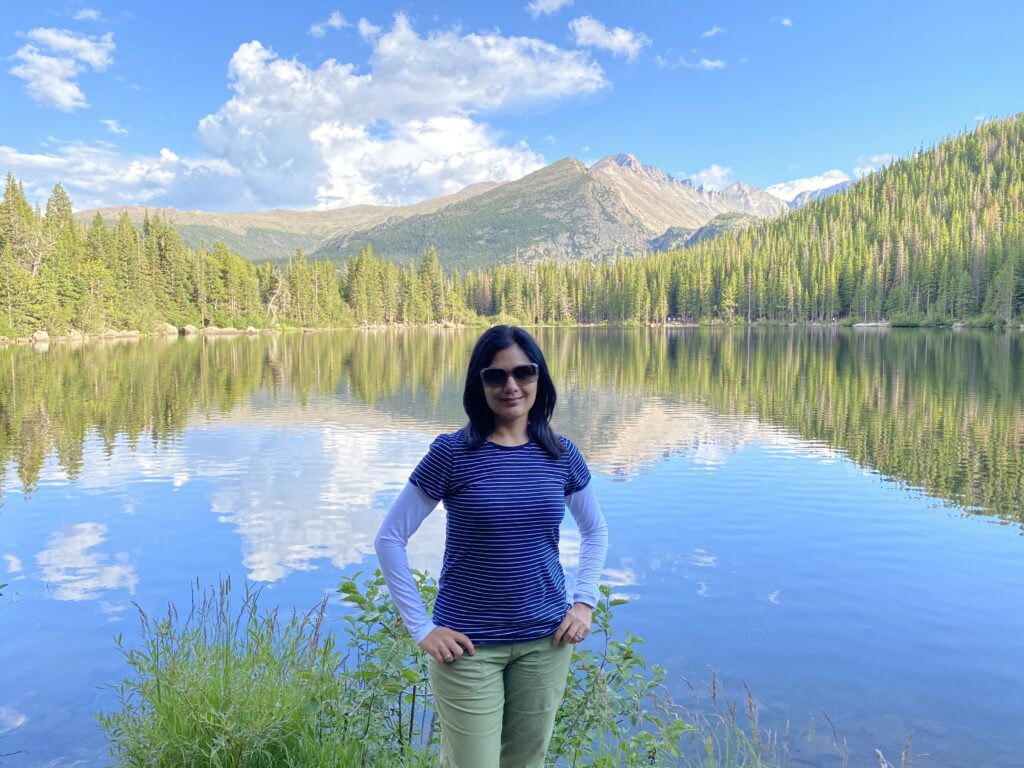
Toward the east entrance of the park, you will see glacier lakes that are very popular. If you plan to walk the trails around Bear Lake, do so in the late afternoon. If you are lucky, you may even spot double rainbows like I did!
Exit the park at Estes Park, which is a bustling mountain town with motels, cabins, restaurants and souvenir shops. There is a wide variety of cuisines in this small town but it’s best to make reservations in advance. Stay at Tiny Town Cabins at Trout Haven Resorts for a typical Colorado cabin experience. The small but functional 19 individual cabins are located alongside the Big Thompson River, just minutes away from Rocky Mountain National Park.
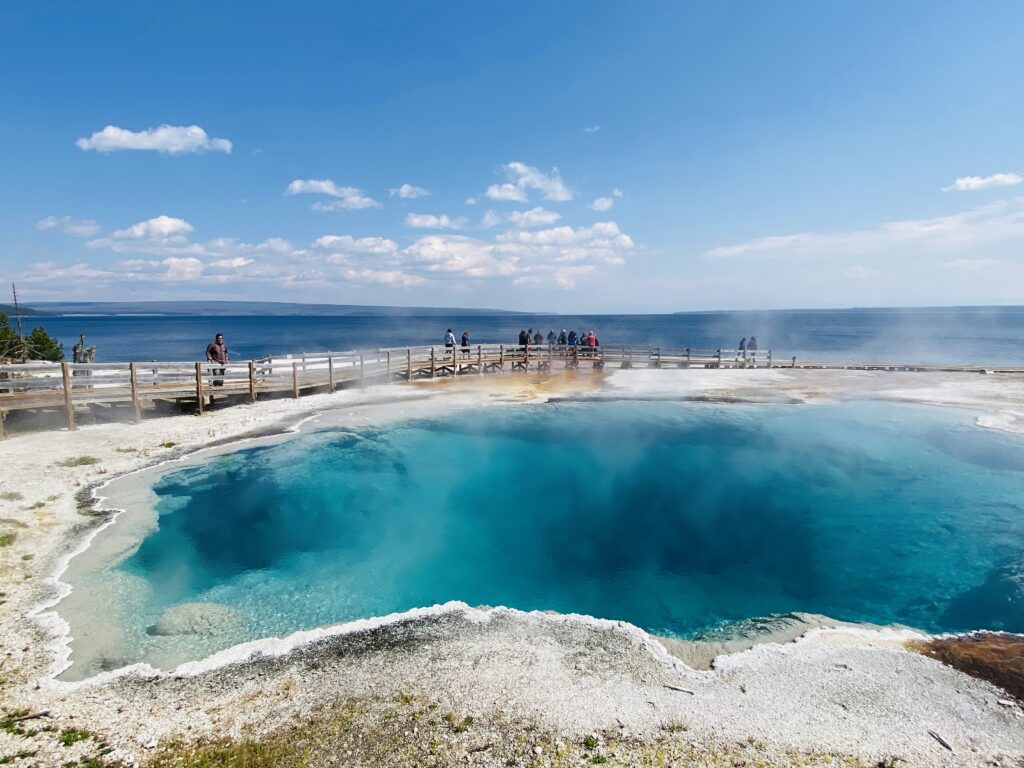
Yellowstone National Park, Wyoming
Yellowstone was the first national park in the U.S. and perhaps the first national park in the world. The park spans an area of 3,468.4 sq miles comprising lakes, canyons, rivers, and mountain ranges. Yellowstone Lake is one of the largest high-elevation lakes in North America. It is centered over the Yellowstone Caldera, the largest super volcano on the continent. There are numerous recreational opportunities, including hiking, camping, boating, fishing, and sightseeing. Lava flows and geothermal pools are spread across the mountains and forests at Yellowstone. So you have to be very careful when hiking and should always stay on marked trails.
Yellowstone is quite large spanning into Wyoming, Montana and Idaho. You can access it from either of these states, but the nearest big airport is Jackson Hole, Wyoming. Here you can take a break for couple of days to visit Grand Tetons National Park, Teton Village’s ski lifts, and then continue on to Yellowstone (1.5 hours). Downtown Jackson Hole is also really hip, filled with gourmet restaurants, art galleries and jewelry stores.
I highly recommend staying at least a couple of nights inside Yellowstone, so you don’t spend a lot of time driving in and out everyday. The lodges inside are more expensive though, without many frills, and are sold out months in advance. However, you are paying for the great location and will have the park all to yourself in the late evening and early morning, when most of the visitors have left.
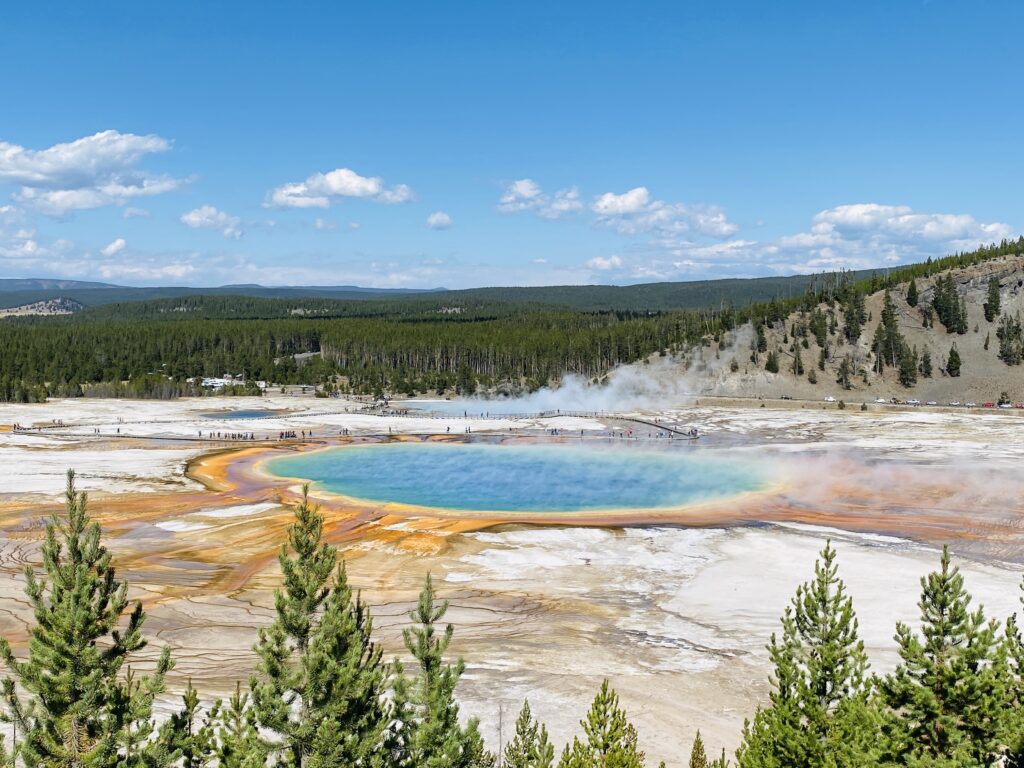
If you take the Loop Road starting in the South, you won’t get lost and most of the attractions will fall along this road. Account for a full day to see West Thumb golden hot spring, the Continental Divide over Craig Pass, famous Old Faithful geyser, colorful Grand Prismatic Spring, and Artist Paint Pods. You will need to do some walking/ light hiking to get to some of these up close, but they also have handicap accesses.
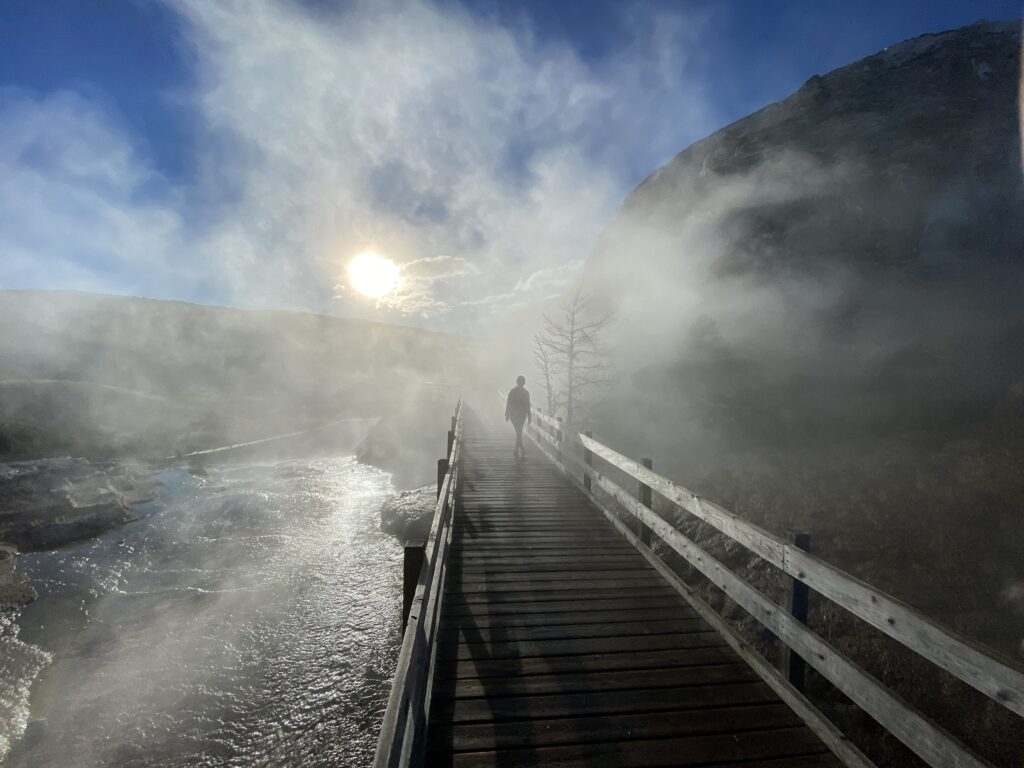
The next day, go to Hayden Valley for wildlife spotting, Sulphur Caldron and Yellowstone Lake. If the weather cooperates, take a boat ride or enjoy some of the water sports on the lake. On the third day, head north to see valleys along Gibbon River and raggedy rocks at Sheepeater Cliff. The Mammoth Hotel is a good place to stay near Mammoth Hot Spring Terraces. Access the Terraces early in the morning when the sun reflects on the foggy white, gold and black rocks.
Note there is no cell reception inside the park (even at the hotels), and road closures are quite frequent (due to accidents, fires, wildlife, repairs, etc) with no alternate route options. Check the notice board at your hotel reception and at all the visitors centers, gas stations and gift shops thought the day to get latest updates.
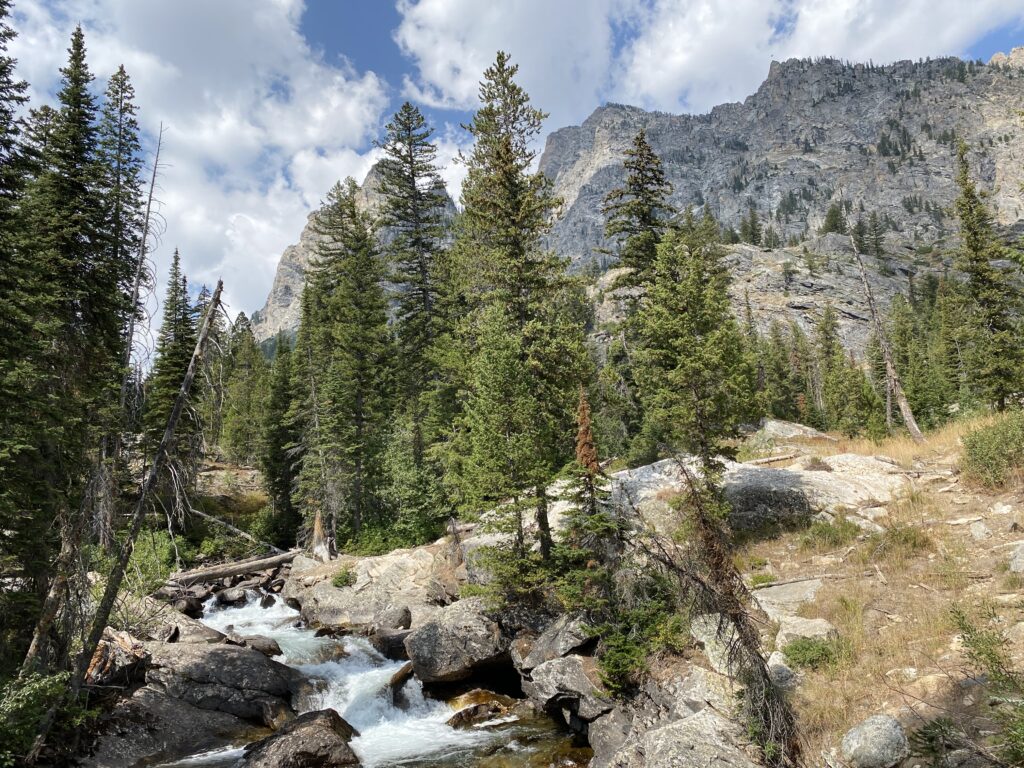
Grand Tetons National Park, Wyoming
Grand Teton National Park is only 10 miles (16 km) south of Yellowstone National Park, connected by John D. Rockefeller, Jr. Memorial Parkway. Along with surrounding national forests, the protected areas constitute the Greater Yellowstone Ecosystem, one of the world’s largest intact mid-latitude temperate ecosystems.
Grand Teton National Park is named for Grand Teton, the tallest mountain in the Teton Range. The park includes the major peaks of the 40-mile-long (64 km) Teton Range, numerous lakes, including 15-mile-long (24 km) Jackson Lake, as well as the upper main stem of the Snake River.
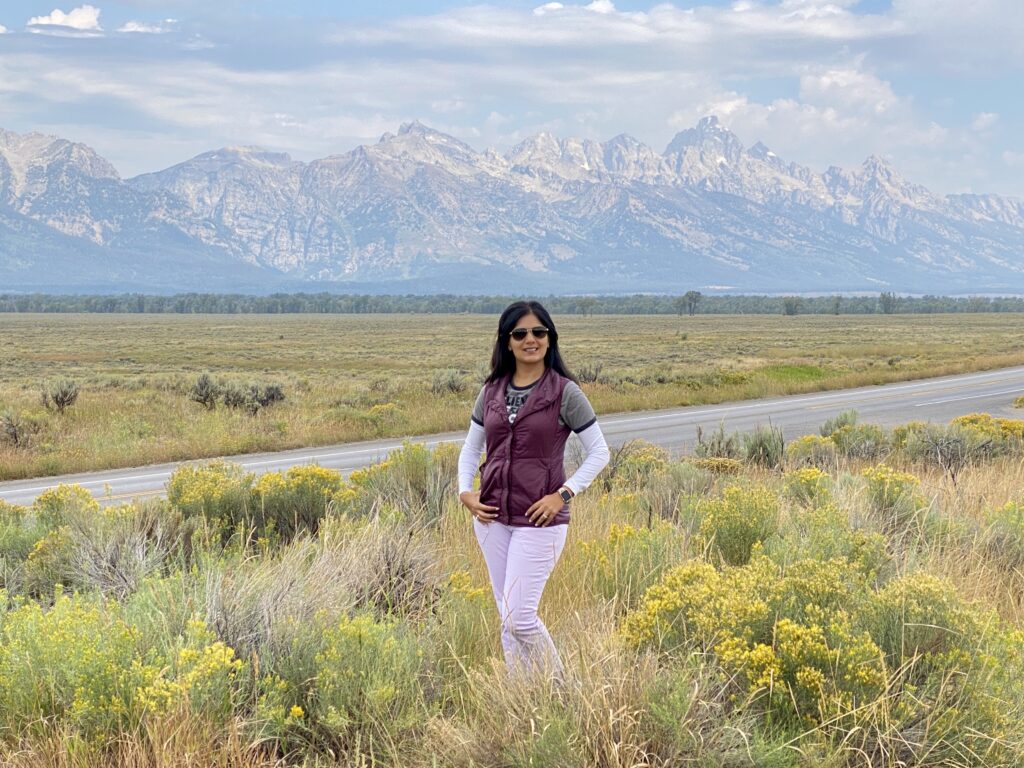
Stay at Jackson Hole, a year-round destination for outdoor adventures, from hiking, biking and rafting in the summer, to skiing in the winter. The Fireside Cabins provide easy access to Grand Teton, where you can spot glaciers, rivers, wildflowers and bisons! The best way to explore Grand Teton National Park is via their well networked paved biking trails. But if that’s not your thing, drive the Moose-Wilson road (partially gravel) that links Moose, Wyoming (the southern entrance) to Teton Village. This road is great for viewing wildlife, stopping at outlooks and going for long or short hikes. One of the must ones is at Jenny Lake. Here, you need to take the water ferry to cross the lake and do a loop back.
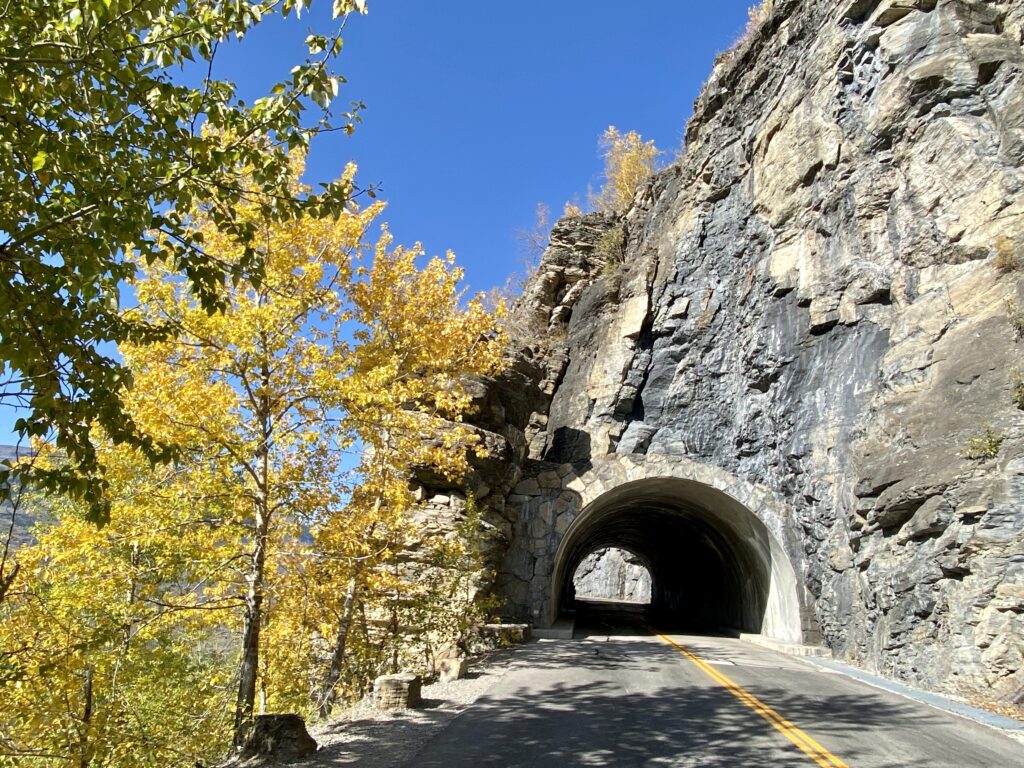
Glacier National Park, Montana
With over 700 miles of trails, Glacier National Park is a hiker’s paradise for adventurous visitors seeking wilderness and solitude. Getting to Glacier requires flying into the small airport of Kalispell, MT and driving a short distance to the park. Stay in the town of Whitefish, where you can explore the downtown with lots of coffee shops, bars, and a lake.
Timing is everything when going to Glacier. The famous Going-to-the-Sun Road is only open from June – September. This is when you will find hikers from Canada (northern part of Glacier), U.S., and all over the world flocking to the park. However, I went to Glacier in the first week of October, after the season was over. Luckily, the temperature was around 70F, Fall colors in full bloom, and the crowds had left.
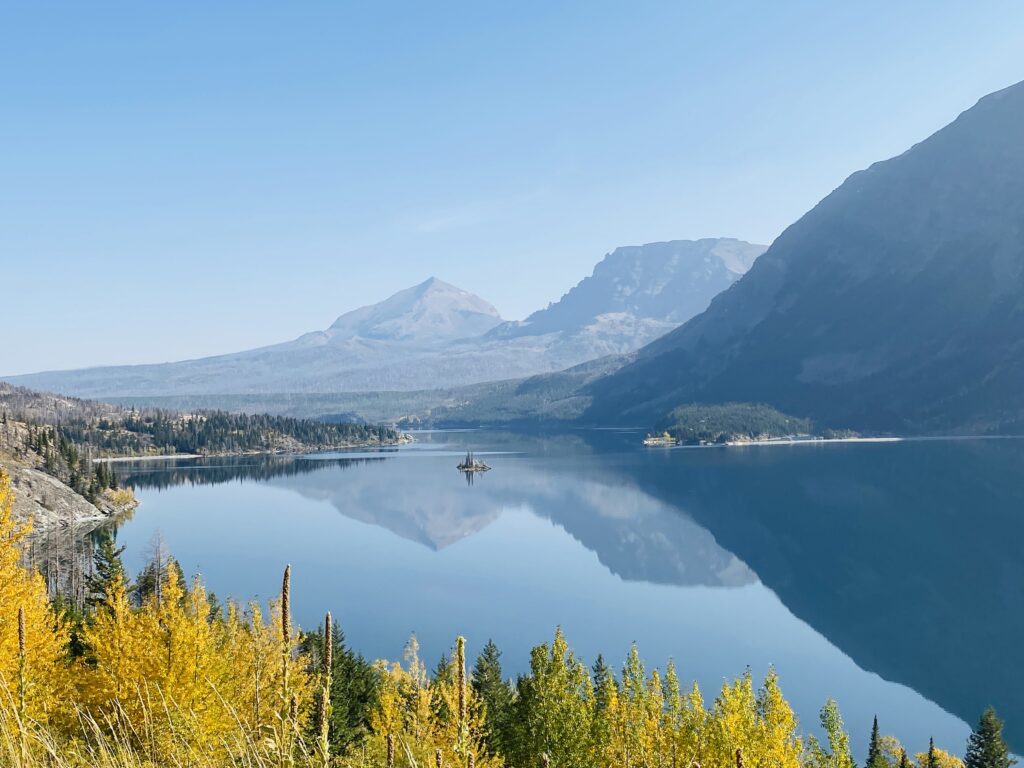
Enter the park at West Glacier early in the morning and see the mist rising above Lake McDonald. The 50-mile Going To The Sun Road loop takes you through narrow passes, mountain overlooks, rising glaciers and alpine villages. Again, this is no easy drive with hair bending turns, so rent an all wheel drive.
Exit the park at Rising Sun, on the western side of the park. However, this was closed due to COVID-19, so I had to turn around and do the loop again. Thats not necessarily a bad thing, as you get to see the Going To The Sun Road from another perspective. The afternoon is a good time to get some hikes in too. Make sure to explore the less visited western side of the park, where the gorgeous Bowman Lake is located. On your way back, grab fresh and warm huckleberry bear claws at Polebridge Mercantile and Bakery, located inside the park.
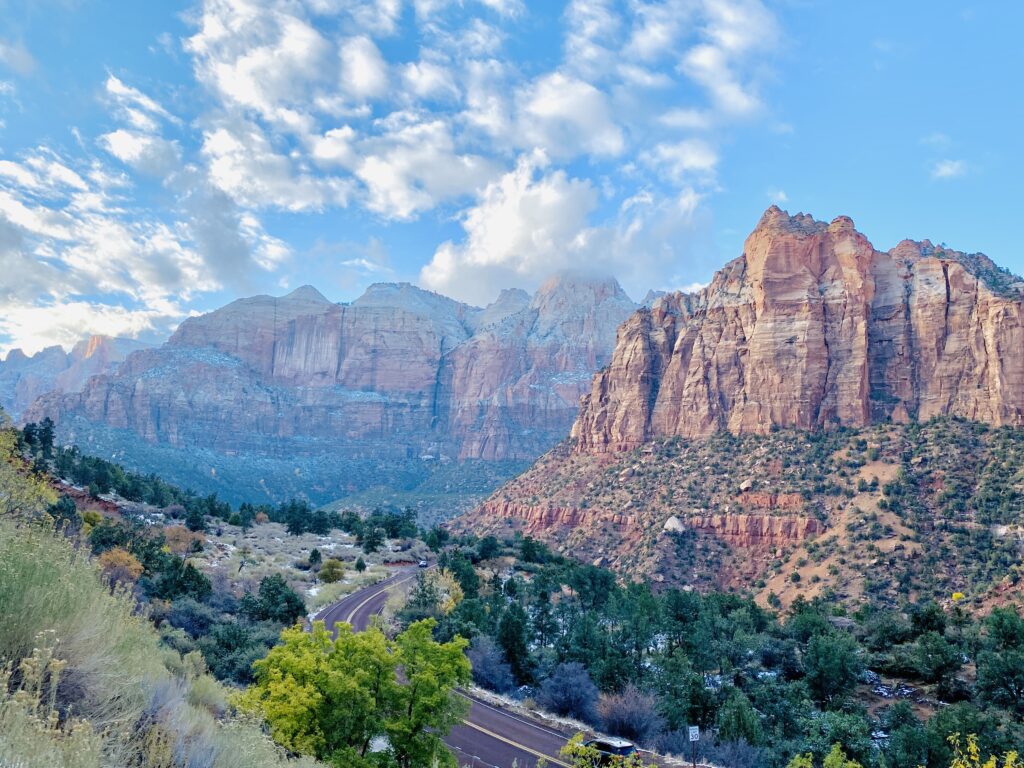
Zion National Park, Utah
Zion National Park is located in southern Utah near the city of Springdale. I drove from Moab to the east entrance of Zion, and exited at the south entrance in Springdale. From here I drove to the town of St George (1 hour), where I stayed at Red Mountain Resort. The resort is located away from the touristy areas, and offers guided tours to Zion as well as other parks in southwest Utah. From there, I flew out of Las Vegas (2 hrs). You can also fly to Salt Lake City and drive to Zion.
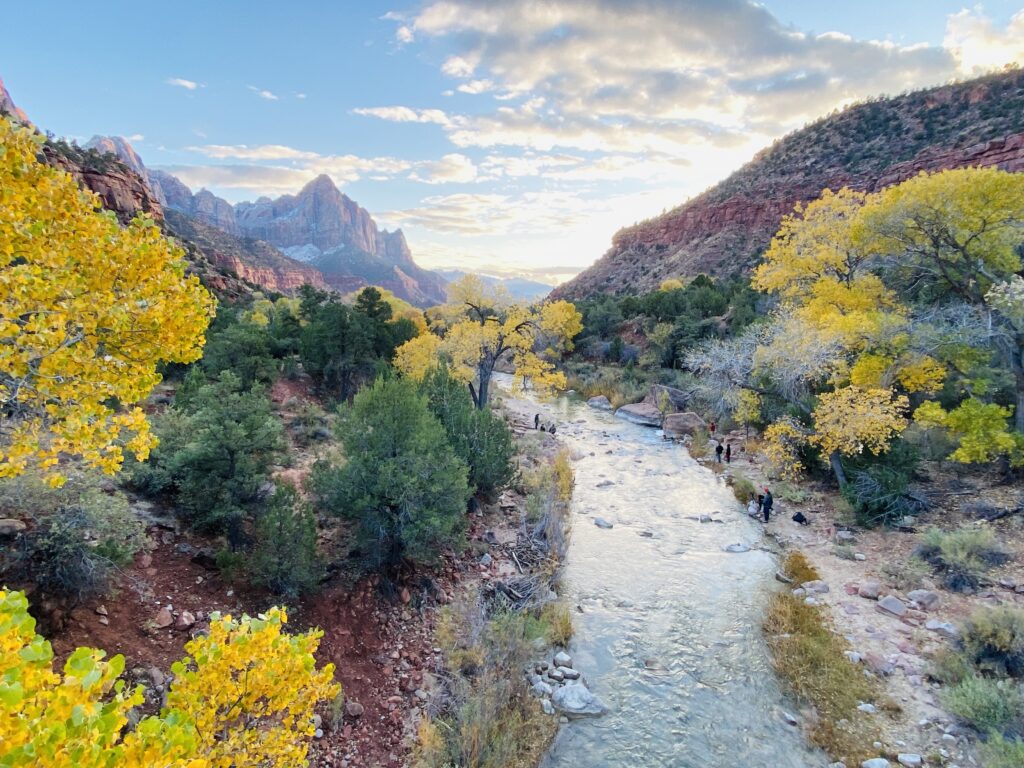
Now, Zion National Park is one of the most visited parks in the whole country. So you can imagine how hard it is to navigate and enjoy driving through its narrow roads. During peak times, you will be required to leave your car (if you can find a spot) in the parking lot, and ride the free shuttle to your hiking trails. But if you go between November – March, like I did, you can breeze through the park in your own vehicle. Remember Zion is beautiful year-round, but some of the trails are closed depending on weather conditions.
You definitely don’t want to miss the sunset over the towering red mountains and the Virgin River.
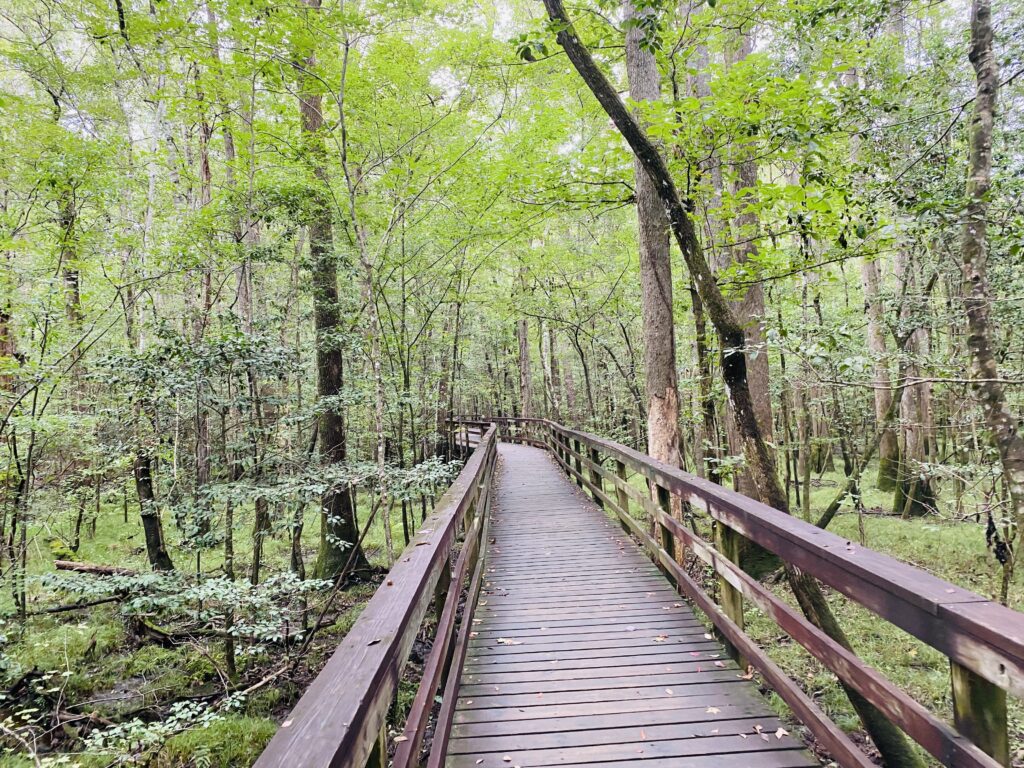
Congaree National Park, SC
Congaree National Park near Columbia, SC is not as well known, but worth a visit. It preserves the largest old-growth floodplain forest forming one of the highest temperate deciduous forest canopies remaining in the world. You can walk on paved paths and boardwalks surrounded by swamps, oaks, national and state champion trees. Some of it looks like scenes from Lord of the Rings!
Large animals possibly seen in the park include bobcats, deer, feral pigs, feral dogs, coyotes, armadillos, turkeys, and otters. Its waters contain interesting creatures like amphibians, turtles, snakes, and many types of fish, including bowfin, alligator gar, and catfish.
There is over 20 miles of backcountry hiking trails, canoe tours, canoeing, kayaking, fishing, birding, nature study and talks. You can visit Congaree in a day, or spend a few if you want to do all the activities.
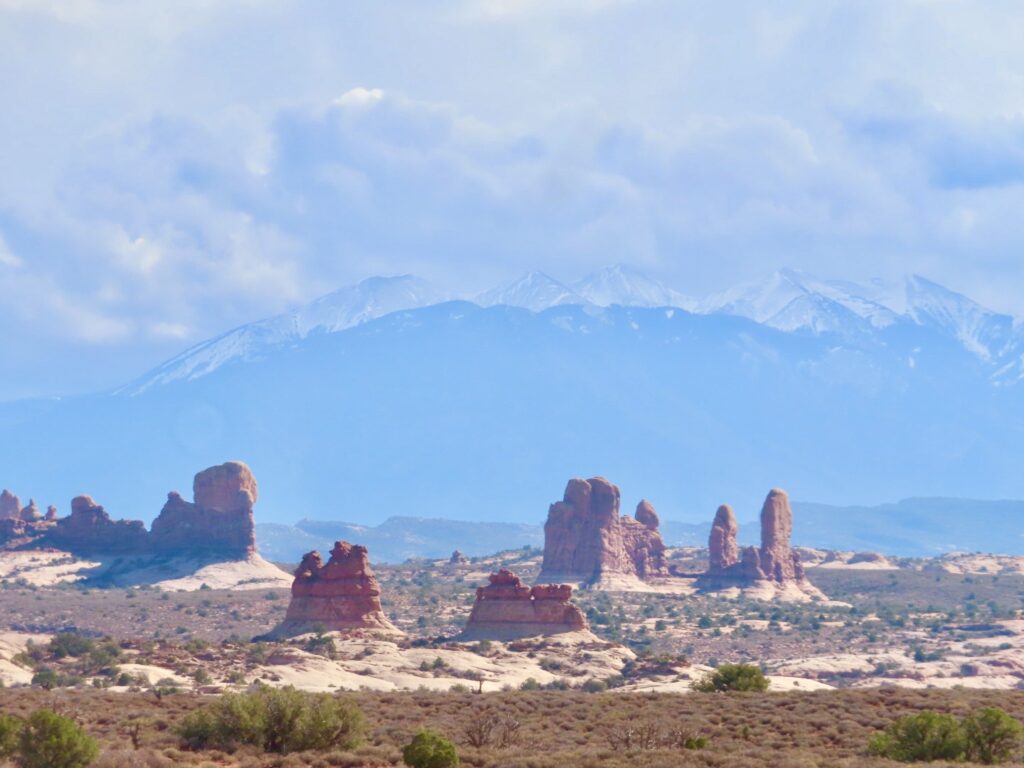
Arches National Park, Utah
Moab is the adventure capital of southern Utah, with access to hiking, rafting, canyoning and more. Moab is a city in eastern Utah. It’s a gateway to massive red rock formations in Arches National Park, mesas and buttes at Canyonlands National Park, Native American rock art, and dinosaur tracks at sites like Bull Canyon Overlook and Copper Ridge. The town itself has tons of cafes, restaurants, shops and a motels. Stay at Moab Springs Ranch, a locally-owned, eco friendly resort with individual cabins and townhouses that are well equipped with kitchen and parking spaces. There is a walking trail, biking trail, hammocks and relaxing garden on site so you can relax with a backdrop of red rocks and cottonwood trees.
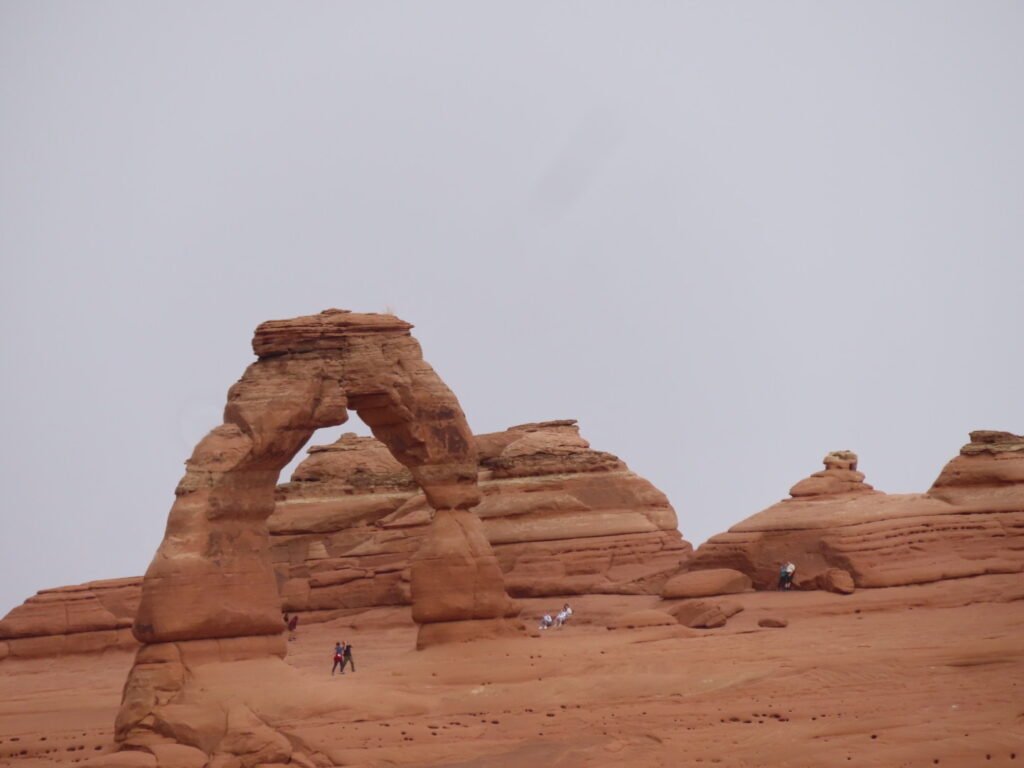
Bordered by the Colorado River in the southeast, Arches has over 2,000 natural sandstone arches. Start your day early at sunrise at Arches National Park, so you have the entire day to explore and watch the rock colors change with the sun. Sunrise and sunrise give the best photo opps. The park itself is not too big if you drive through the loop road, though you will do injustice if you didn’t get out of your car. Many of the arches can be seen from the road, but offer a better view with a short hike.
There are no restaurants or stores inside the park, but it is only minutes away from downtown Moab, so you can pack food for the day or return to the city for dinner.
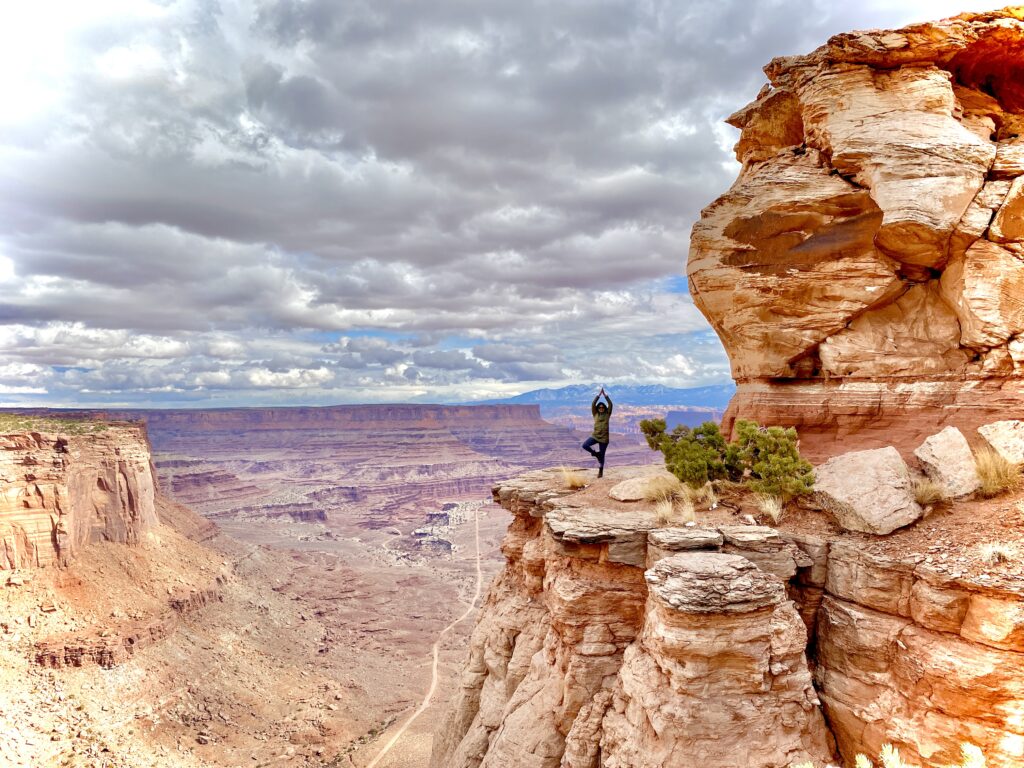
Canyonlands National Park, Utah
Also a few minutes drive from Moab, Canyonlands National Park is the largest national park in Utah and requires 2-3 days to explore, especially if you plan to do any backcountry or overnight hiking. However, if you only have one day, plan to drive the paved Island in the Sky road atop a massive 1500 foot mesa. Here you can stop at different pullouts to see panoramic overlooks, dramatic desert landscape carved by the Colorado River, towering rock pinnacles known as the Needles, the remote canyons of the Maze and the Native American rock paintings in Horseshoe Canyon. There are many hiking trails too, so combine some physical exercise with driving time.
The bookstore and gift shop inside Canyonlands offers some sodas and packaged foods only, so plan to bring your picnic basket and lots of water from Moab. Also, it is much colder and windier at higher altitudes inside the park, so make sure to bring additional warm layers.
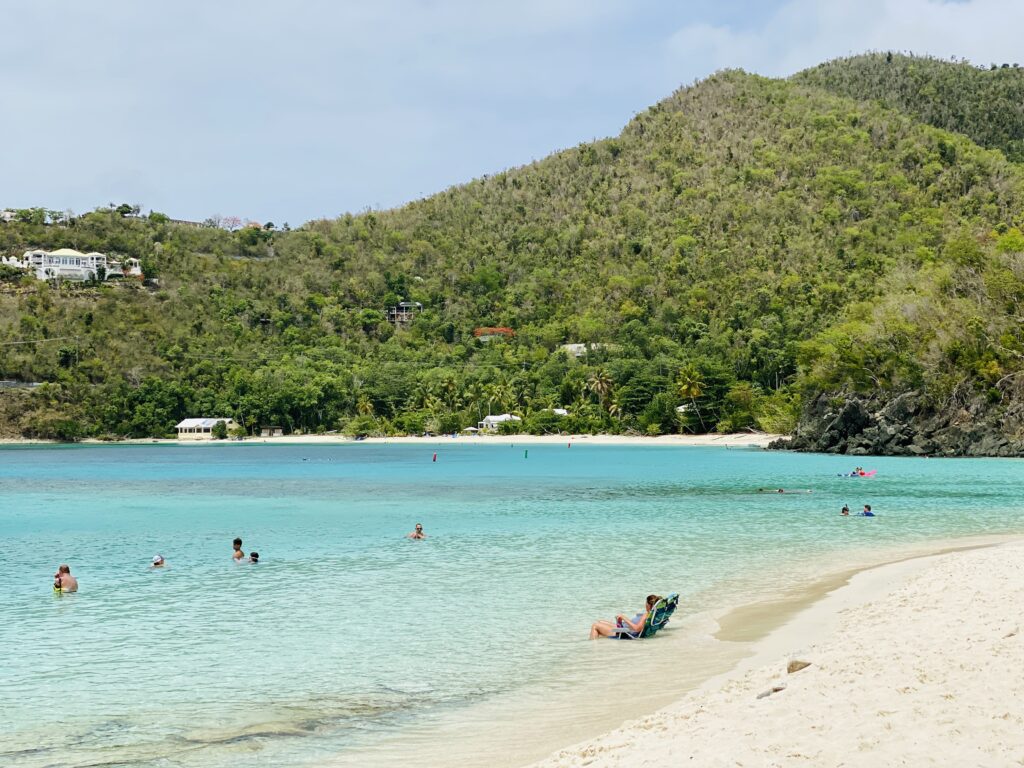
Virgin Islands National Park, USVI
Virgin Islands National Park is more than just beautiful beaches. Here you can hike to plantation ruins to learn about a time when sugar dominated the island, visit the ancient petroglyphs carved by the Taino Indians, and snorkel the coral reefs to discover hidden marine life. The park covers 60% of St John, 9 sq mi of adjacent ocean, and nearly all of Hassel Island, just off the Charlotte Amalie, Saint Thomas harbor.
You can fly in to St Thomas or St John islands and spend a few days exploring the beaches, towns and beautiful waters. St Thomas is much bigger and well connected to major airports, while St John is more pristine. You can combine your trip and move between the islands by passenger and vehicle ferry, so you can take your rental car with you too.
The best way to explore St John many pristine white sand beaches and hiking trails that make up US Virgin Islands National Park is by car. There are taxis, open air jeeps and shuttle tours, however, having your own vehicle allows you to stop wherever you want and safely distance. Note, most facilities are still closed at St John, not because of COVID, but they never fully recovered from hurricanes Irma and and Maria in 2017.
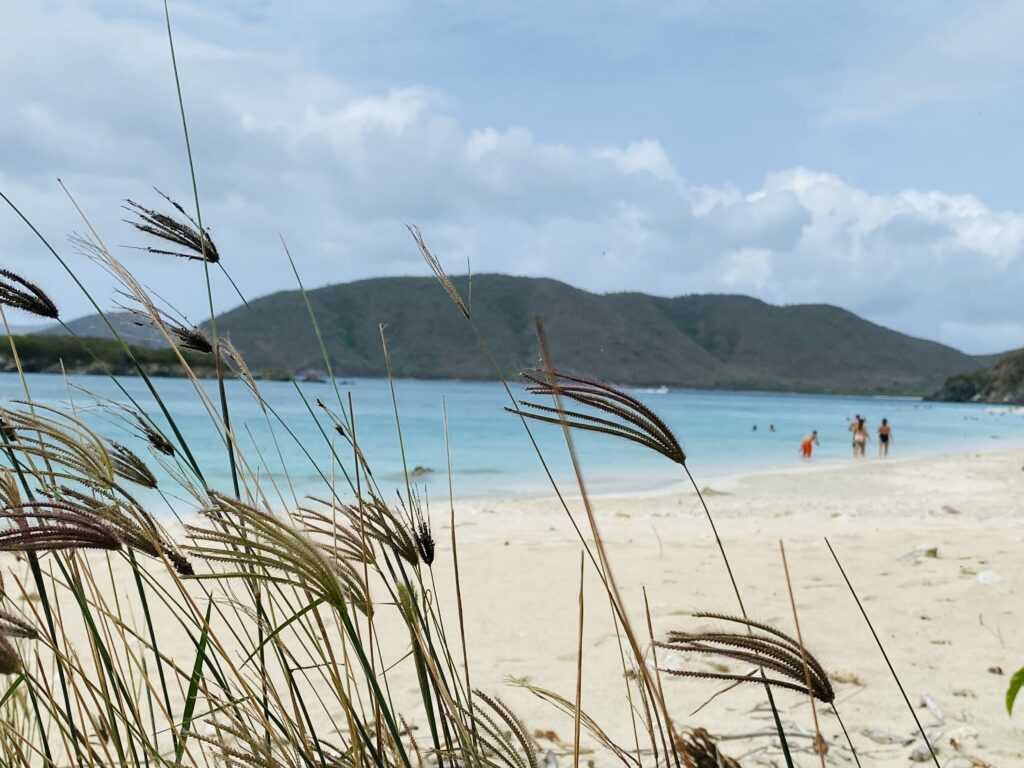
Virgin Islands Eco Tour is a local company that offers kayaking, snorkeling, hiking and boat tours around the National Park. Start at Cruz Bay and spend a half or full day with a knowledgeable guide to learn about marine life, geology and flora of the islands.
Typically, entrance to each national park ranges between $20-50/ day. Save money by purchasing America The Beautiful annual pass. For only $80, you can visit over 80 national parks and over 2,000 Federal recreation sites across the USA.